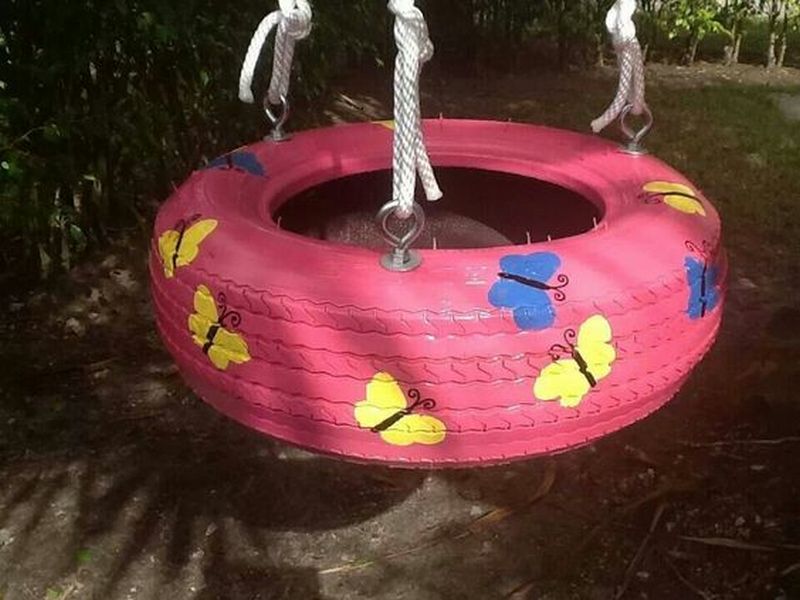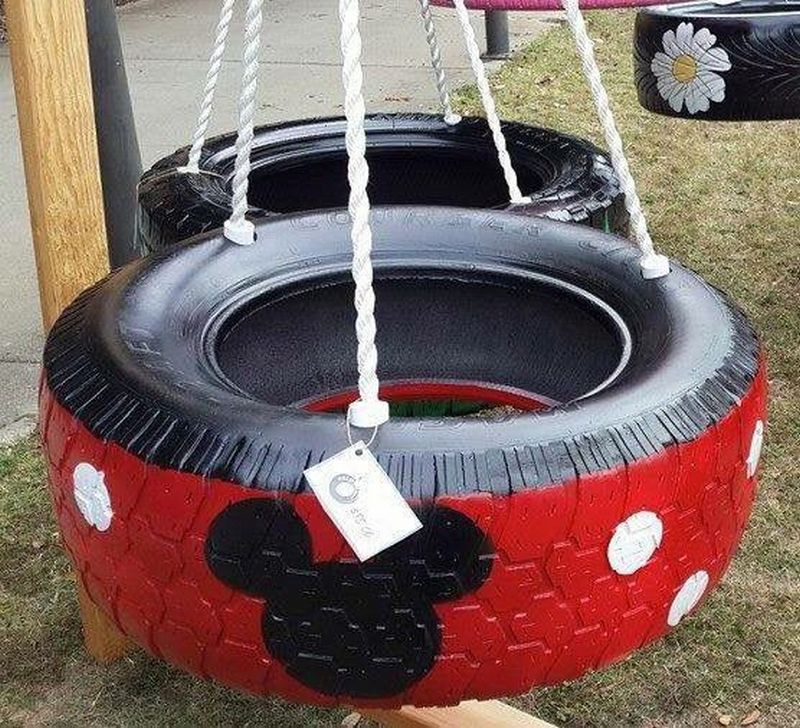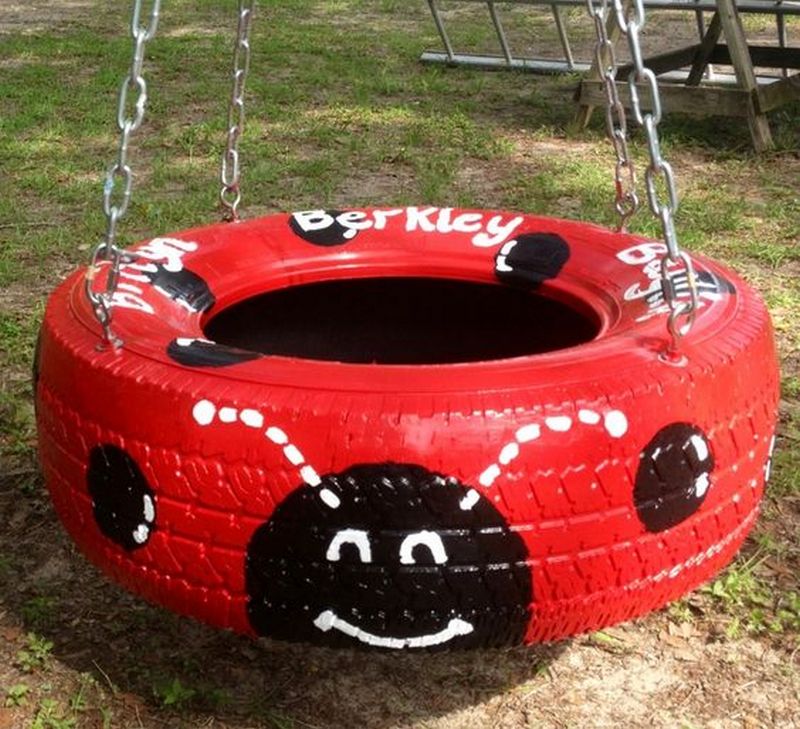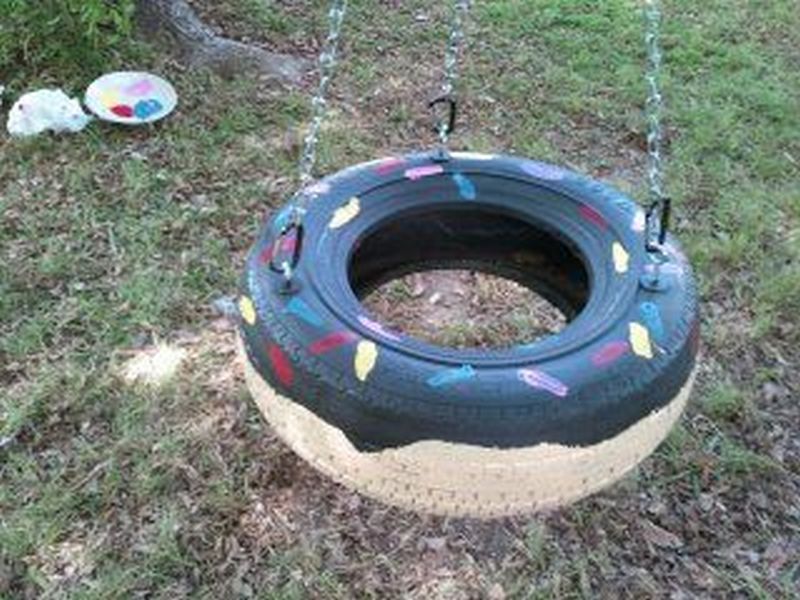Last Updated on May 9, 2024 by teamobn

A childhood classic are tire swings. All ages of kids adore them because they provide an easy yet fun method to play. Swings are a terrific way to have fun whether they are in the backyard or on a playground. They make a terrific addition to any home because adults may also enjoy them.
Tire swings require certain considerations for an effective and safe do-it-yourself project. Initially, make sure you select a tire that fits your planned purpose and is in good shape. Second, pay great attention to the installation procedure and make sure the swing is fastened to a strong structure.
Ultimately, routine inspection and upkeep will guarantee that your tire swing is safe and operational for many years to come. You may spend many years enjoying this timeless playground standard with a little upkeep.

One excellent method to recycle an old tire and make it enjoyable for the entire family is with this do-it-yourself tire swing idea. A few supplies can let you quickly turn an old tire into a swinging good time. To begin, all you need are a tire, some rope, and a few tools. This technique is a terrific approach to revitalize an old, non-functioning tire.
That tire can become a fully working swing with a few materials and some easy instructions. What more then need you wait? Commence your own do-it-yourself tire swing right now! Should one not exist, your neighborhood tire dealer can provide one. You might get one for free if you ask properly.Tailor your tire anyway you see fit.

Bold color painting on your tire will make it look interesting and appealing. Go for lighter colours if you want it to appear classic and muted. Your kids will adore it in any case, and so will you. Still, there are a few things to remember before painting your tyre: Be sure the surface is dry and clean before you begin.
Second, use paint made especially for tires; ordinary paint won’t stick right and will come off fast. Third, to extend the life of the paint, apply a few thin coats instead of one heavy one. Try it out, your tire will thank you!
Contents
Building a Tire Swing
Materials
- Tire
- Make sure that the tire is clean and still safe to be used as a swing
- 5/8” diameter rope
- The rope should have 8000 minimum breaking strength; 800 lbs working load
- Old bicycle tube
- This tube will help protect the tree and not harm its bark
- Gaffer tape
- The tape will help you achieve a clean cut when you cut the rope
- Skinny rope with heavyweight at the end to use as a throw line
- This will help you pull the heavy rope up to the limb
- 3 pcs each of small and big washers
- 3 pcs Wire rope clamp
- 6 pcs 3/8” nuts
Tools
- Measuring tape
- Ratchet
- Utility knife
Instructions
Step 1: Prepare the Tire
- Clean the Tire: Make sure all dirt, debris, and leftovers are completely cleaned off the tire. Ensure it is dry and inspect it for any damages or excessive wear.
- Drill Drainage Holes: Using a utility knife or a drill, make a few small holes in the bottom of the tire to allow for water drainage, preventing water accumulation.
Step 2: Prepare the Tree
- Select a Strong Limb: Choose a healthy, sturdy limb that is at least 8 inches in diameter. The limb should be high enough to allow the tire to swing freely.
- Protect the Limb: Wrap the area of the limb where the rope will go with an old bicycle tube to protect the bark from damage.
Step 3: Set Up the Rope
- Measure and Cut the Rope: Measure the height from the ground to the limb and adjust the length of the 5/8” diameter rope accordingly. Remember to account for extra rope to tie knots.
- Thread the Rope Through the Tire: Feed one end of the rope through the tire. To stop the rope from fraying when threading, wrap gaffer tape across the ends.
Step 4: Attach the Rope to the Tree
- Use the Throw Line: Tie the skinny rope with a heavyweight to the end of your larger rope. Throw it over the selected limb and pull the heavy rope up and over the limb.
- Secure the Rope: Bring both ends of the rope down and thread them through the big washers, then back through a wire rope clamp. Adjust the tire to your desired height.
- Tighten the Clamp: Slide the small washers onto the rope underneath the clamp for extra security, and tighten the clamp using a ratchet. Ensure that the wire rope clamp is securely fastened to prevent the rope from slipping.
Step 5: Final Adjustments and Safety Checks
- Double Check All Connections: Go through each connection point to ensure everything is tight and secure. The knots should be sturdy, and the clamps should be firmly tightened.
- Test the Swing: Gently pull on the swing to test its strength. Make any necessary adjustments to ensure the tire swing is stable and secure.
- Trim Excess Rope: Use the utility knife to cut off any excess rope above the clamps. Cover the cut end with gaffer tape to prevent fraying.
Step 6: Enjoy Your Tire Swing
- Safety Inspection: Regularly check the tire swing for any signs of wear or damage. Inspect the rope, the clamps, and the limb for any changes that could pose a safety risk.
- Have Fun: Your tire swing is now ready to use! Enjoy it with your family, making sure that children are supervised while swinging.
Click on any image to start the lightbox display. Use your Esc key to close the lightbox.









For a visual guide, check out the video below.
Safety Considerations for Tire Swings
Creating a tire swing can provide endless hours of outdoor fun, but safety must always be the priority. Proper installation, regular maintenance, and careful use are crucial to ensure a safe environment for everyone. Here are key safety considerations to keep in mind when setting up and using a tire swing:
Installation Safety
- Choose the Right Location: Install the tire swing in an area free from obstacles such as fences, buildings, or other playground equipment. Ensure there is ample space around the swing for safe use.
- Select a Suitable Tree Limb: The tree limb used to hang the swing should be sturdy and healthy, at least 8 inches in diameter. Avoid branches that show signs of disease or weakness.
Material and Equipment Integrity
- Inspect the Tire: Before using a tire, check it for wear and tear, sharp edges, or exposed wires that could cause injury. It should be clean and free from any harmful residues.
- Use Strong and Durable Rope: The rope should have a minimum breaking strength of 8000 lbs to ensure it can support the weight and force of swinging. Regularly check for fraying, wear, or weather damage.
Secure Installation
- Ensure Secure Knots and Fixtures: Use strong knots and reliable hardware such as wire rope clamps to secure the swing. Double-check that all fixtures are tightened and that the rope is not slipping.
- Protect the Tree Limb: Use a protective barrier like an old bicycle tube around the limb to prevent damage to the tree and reduce wear on the rope.
Regular Maintenance
- Routine Checks: Regularly inspect the swing to ensure it remains in good condition. This includes checking the tire, rope, and any connecting hardware for signs of wear or damage.
- Immediate Repairs: If any part of the swing setup shows signs of deterioration or damage, repair or replace it immediately to prevent accidents.
Safe Use
- Supervise Young Children: Always supervise children while they are using the tire swing, especially those under the age of 5.
- Limit the Number of Users: Only one person should use the tire swing at a time to avoid collisions and excessive weight on the swing.
- Proper Use Instructions: Teach children how to use the swing safely, including sitting in the center of the tire and holding onto the rope securely.
Weather Considerations
- Weatherproofing: Protect the rope and tire from extreme weather conditions by applying suitable weatherproofing treatments or storing the swing during severe weather.
- Seasonal Adjustments: Before the start of each season, especially in regions with significant seasonal changes, perform a comprehensive check and maintenance routine.
By adhering to these safety considerations, you can ensure that your tire swing is a safe and enjoyable addition to your backyard. Regular attention and care will help maintain the longevity and security of the swing, providing peace of mind while children play.
Conclusion
A tire swing is a rewarding project that brings joy and outdoor fun to your backyard. It’s crucial to focus on proper installation, use durable materials, and perform regular maintenance to ensure safety. Encourage safe play by supervising young children and teaching them how to use the swing correctly. With these measures in place, your tire swing will provide endless hours of laughter and adventure for everyone.








